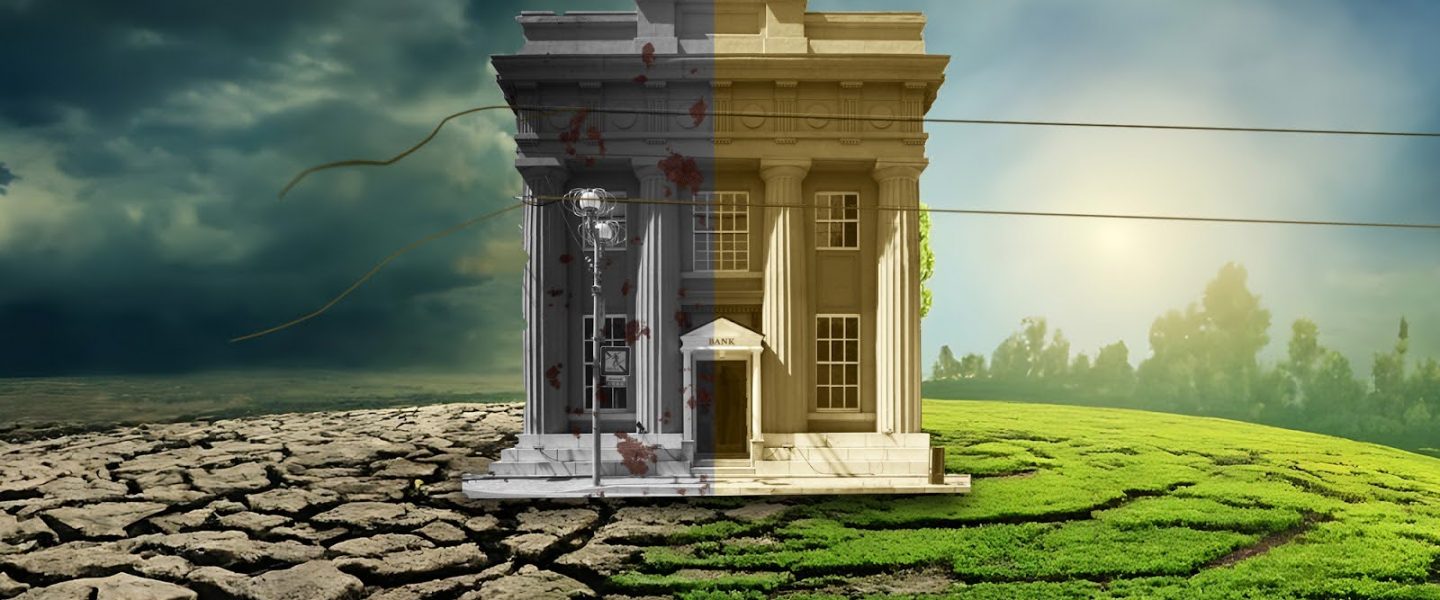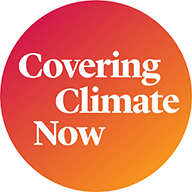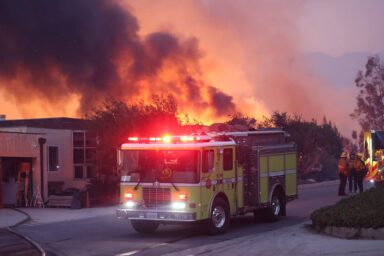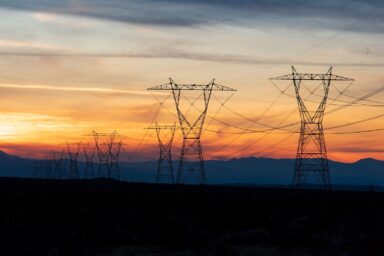When I learned that my bank might be investing my money in fossil fuels, I went looking for an alternative.
|
Listen To This Story
|
I grew up knowing that when you had extra money, you put it under a bed, stashed it in a book or a clock, or, if there was enough of it, it went into a savings account at a bank.
It hadn’t occurred to me that my bank account could be contributing to the climate crisis until I learned that since the adoption of the Paris Agreement in 2015, 60 of the world’s largest banks have invested $5.5 trillion into the fossil fuel industry. And they’re using our money to do it.
When we deposit our paychecks, the money doesn’t just sit there. Generally, banking institutions will use our money for investments and loans to other individuals and businesses, including fossil fuel companies.
So I realized that one of the levers that I could pull to fight climate change would be to take my money out of banks that invest in fossil fuels. And I could use my skills as a journalist to figure out where to put my money instead.
One thing I learned in my research: It’s no surprise that I didn’t know my bank could be using my money for fossil fuel investments.
“I worked in financial services, and I didn’t even know where my money was going,” said Yejide Olutosin, director of the Business Climate Finance Initiative at Impact Experience, an organization that works with companies to assess their carbon footprint and find ways to reduce it. “So you imagine just the everyday person with the everyday chores and family and obligations. They don’t have the time.”
Are There Any Climate-Friendly Banks?
The best-known banks are still investing trillions in fossil fuel-related companies. But numerous smaller, community-driven banks, as well as certain online-only banks, appear on lists of climate-friendly banking institutions, such as this list created by the volunteer climate activists behind bank.green.
Another resource is Bank for Good, which lists banks and credit unions that have committed not to do business with the fossil fuel industry. You can filter for your needs and pull up information about why the suggested options are considered climate-friendly.
If you don’t see your bank on the list, the website offers a sample letter that you can send to your bank requesting an answer about whether they invest in fossil fuels. If you do end up moving your money to a greener bank, you can also send your original banking institution a letter or email about why you’re divesting. (The activist group 350.org has a sample letter.)
Are Credit Unions Climate-Friendly?
You might also choose to put your money into a locally owned bank or credit union. These institutions are less likely to have money invested in fossil fuel companies and are more likely to focus on the community in their investing and loan programs.
Olutosin of the Business Climate Finance Initiative works with companies to find climate-friendly finance options that focus on justice, equity, diversity, and inclusion. She, too, has made changes in her banking and investment choices.
“I realized that some of the companies that I was investing in a few years ago also support financially privatized prisons, which is something that is just a hard line for me,” she said. “I don’t like the business model, and I don’t like the social implications of privatized prisons in this country.”
Olutosin is also a big advocate for banking locally — and she points out that many local banks offer competitive interest rates.
“If you were to bank with a different bank tomorrow, your savings account doesn’t go down,” Olutosin said. “But by shifting that money to a bank that is working in your community, you not only get whatever the savings rate is, but you also get that confidence of knowing that, ‘OK, a portion of what I’m depositing into this institution reflects my morals and value.’”
Olutosin said community-centered financial institutions also often offer services like financial literacy workshops and guidance on how to buy a home, a justice issue in itself.
“When you think about traditional banks, you kind of have to have that relationship before you can ask for a mortgage or ask for a line of credit. But what if you’ve been unbankable?” Olutosin said, referring to the approximately 5.9 million American households that do not contain one member who has a savings or checking account at a bank or credit union.
“But you want to start a business in your local community? What are your options? And so that’s another place where community-led financial institutions have the upper hand.”
Olutosin said that credit unions and local banks are more likely than larger institutions to have flexibility on the requirements needed to offer home and business loans to individuals.
Marginalized and minority communities are disproportionately harmed by extreme weather. That makes it all the more important to support these local and community institutions, Olutosin said.
“If my home washes out into the sea, there’s nowhere else for me to go,” she said. “And if I’m unbankable, how do I then get another mortgage so that I can live somewhere else?”
She said that it is important to not look at climate action in a silo, but rather something that can also fight against many forms of inequality.
How I Chose a Climate-Friendly Bank
I had been banking with a traditional big bank that has made weak promises of moving away from fossil fuels. But it still ranks as one of the top 60 investors in fossil fuels in the world, according to bank.green.
Through my research, I found Climate First Bank, and I decided to make the switch.
I felt nervous about pulling my money out of a traditional bank to put it into one that I hadn’t even heard of before. But learning that the Climate First Bank is FDIC-insured put my mind at ease. (When a bank is FDIC insured, it means that at least $250,000 is safe even if the bank fails. You can check whether a bank is FDIC insured at this site.)
Climate First Bank is based in Florida with no branches outside the state. I didn’t want to pay a fee to get cash out, but on the bank’s ATM surcharge-free locator page, I saw a couple of spots near where I live.
I completed the application for a bank account and quickly heard back from an actual person, who set up a video call with me to go over my application. Speaking to someone working there reassured me about moving my money.
A few weeks after opening up a bank account, I organized an interview with Ken LaRoe, the founder and CEO of Climate First Bank. When we connected on Zoom, LaRoe was wearing a black T-shirt that said “Don’t Say DeSantis” in rainbow colors.
LaRoe told me he’d founded and operated two other banks before he opened Climate First Bank in 2021. His first one was just your run-of-the-mill bank. But something changed for him after he read the book “Let My People Go Surfing” by Yvon Chouinard, founder of the outdoor gear and clothing company Patagonia.
“And it was like, ‘Oh my gosh, I’ve got to do something that gives back and doesn’t just make a bunch of people a bunch of money,’” LaRoe said. That was the genesis of First Green Bank, founded in 2009 to promote environmental responsibility and green building. But when he sold the bank in 2018, the bank that acquired First Green Bank didn’t continue the environmental mission.
“It just broke my heart,” LaRoe said. “Every morning I’d get up and say, ‘I’m going to start another bank.’ And every night I’d say, ‘I can’t do it. I’m too old, I don’t have it in me.’”
In 2021, LaRoe decided to open Climate First Bank, which provides individuals and businesses with specialized green loan options for rooftop solar, EV charging, and even purchasing certified carbon offsets. The bank works with We Are Neutral, a Florida-based nonprofit that helps companies reduce their carbon footprint, and is also part of the 1% for the Planet network, whose members pledge to donate at least 1% of annual sales to environmental groups. And the bank’s branch offices use environmentally friendly construction.
LaRoe said the bank now has customers in 48 states and two foreign countries and surpassed $460 million in assets in September 2023. According to LaRoe, the bank lends about $6 million per month in residential solar loans.
So instead of the money in my checking account being used to float and grow fossil fuel companies, now it is being used to help put solar panels on homes.
Every Step Counts
One thing I have learned over the past year is that trying to do anything perfectly doesn’t get you very far. You end up becoming overwhelmed. A better way to approach combating climate change is taking one step at a time, knowing that every step counts. So if you don’t have the time or ability to fully divest from a fossil-fuel-invested bank all at once, that is OK. I know that I am not doing it perfectly, but I know that I am moving in the right direction, and that’s good enough.
This story by Pearl Marvell was originally published by Yale Climate Connections and is part of Covering Climate Now, a global journalism collaboration strengthening coverage of the climate story.





